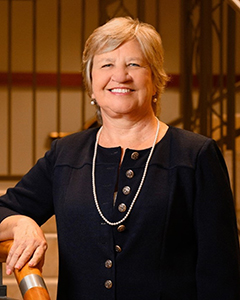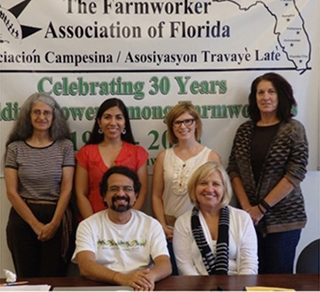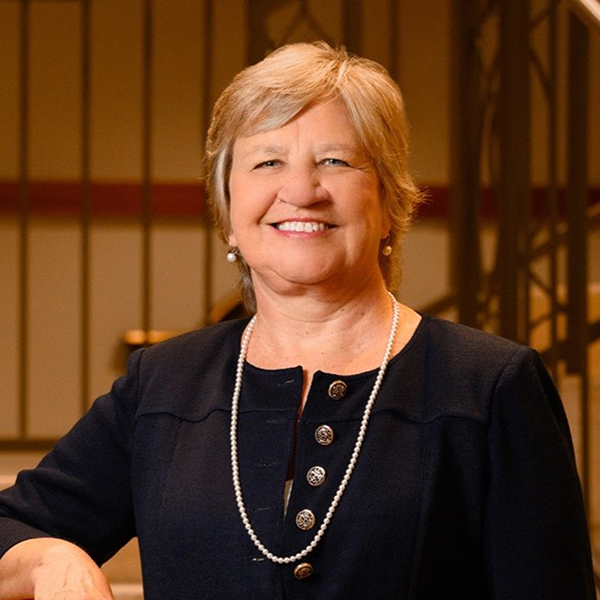
When Linda McCauley, Ph.D., R.N., graduated from high school, most women followed one of two career paths, she said: nursing or education. Given her interest in women’s and children’s health, the choice was clear. McCauley, like her mother, became a nurse.
Though she loved providing patient care, McCauley was hungry to learn more about the factors that influence health. After completing a Master of Nursing at the Emory University Nell Hodgson Woodruff School of Nursing — where she now serves as dean — McCauley earned a Ph.D. in environmental health and epidemiology from the University of Cincinnati.
During her doctoral work, McCauley published one of the first studies showing that nurses who prepared and administered chemotherapy drugs were more likely to experience adverse health effects. Ever since, she has made it her mission to understand and reduce occupational and environmental chemical exposures.
When NIEHS requested applications for community-based intervention research in 1996 — the first federal funding opportunity for research projects partnered with communities — McCauley jumped at the opportunity.
“That’s what nurses do: work with communities,” McCauley said. “It was never the chemical that defined me, but the population that influenced my work.”
Understanding Agricultural Exposures
While working as a scientist in occupational and environmental toxicology at Oregon Health & Science University, McCauley won NIEHS funding to study pesticide exposure among Latino agricultural families in Oregon. Spanning 1996 to 2004, the community-based project relied on regular feedback from farmworker community representatives. According to McCauley, communities see nurses as trusted care providers, which helped her forge partnerships.
Among her findings, she learned that worker protective equipment was essentially nonexistent.

“Few workers reported wearing any type of protective clothing or equipment, and the large majority wore their work clothes into their homes,” she said. “At the time, there were no guidelines about take-home contamination, when farmworkers inadvertently take pesticides home on their clothing and skin, which is a potential source of exposure to their families.”
In 2004, McCauley transitioned to the University of Pennsylvania, where she spent five years as a professor of community health and the Associate Dean of Nursing Research. There, she evaluated the health effects of pesticide exposure, focusing specifically on neurological outcomes in both the workers and their children.
When findings showed associations between pesticide exposure and deficits in neurobehavioral performance, such as cognitive and motor function, McCauley knew she had to dive deeper into environmental exposures, particularly among vulnerable children.
She began her tenure as Dean of Nursing at Emory University in 2009. In collaboration with the Farmworker Association of Florida — a partnership that continues today — McCauley initiated a study on the health effects of multiple agricultural exposures in pregnant farmworkers and their children.
“Agricultural work presents a variety of hazards to pregnant workers, including an increased risk of heat stress, pesticide exposure, and musculoskeletal injuries,” she said. “By promoting farmworkers’ health, we can also improve the health of their children — not just during childhood, but throughout their lives.”
Advancing Children’s Health
In 2015, McCauley established the Children’s Environmental Health Center at Emory University, an initiative funded by NIEHS and the U.S. Environmental Protection Agency. The center studied how environmental exposures during pregnancy and infancy, along with the microbiome and the immune system, influence brain development.

She now leads Emory’s CHARTER Center, which fosters partnerships between researchers and communities to decrease environmental exposures and translate scientific findings into action.
“CHARTER has allowed me to use my background in community outreach and education to study the actual science behind research translation and communication,” McCauley said.
Tailoring Community Messages
In partnership with the University of Georgia, CHARTER is developing a virtual reality platform to communicate environmental health risks to community members and encourage pro-environmental action.
“During trial runs with community members, they absolutely loved virtual reality and were so engaged with the platform,” McCauley said. “It’s a prime example of how we are always learning new perspectives and new ways to communicate.”
McCauley learned early on the importance of tailoring messages to community preferences. As part of a 2002 study, she developed an educational video explaining pesticide risks to farmworkers.
“Focus group sessions with Oregon farmworkers revealed that community members wanted care providers to deliver information about potential exposures,” McCauley said. “Farmworkers in Florida, however, preferred messages from other farmworkers. All communities are different.”
McCauley and team edited the video to match preferences of each community, including preparing educational messages in Indigenous languages when needed. According to McCauley, listening to community needs and preferences resulted in increased overall pesticide knowledge and protective behaviors.
After decades of collaborative research with communities, McCauley has learned that achieving goals depends on the level of commitment of both the research team and the community.
“Every community has its own history, power struggles, and trust relationships,” she said. “There is no fast way to form relationships. You have to be immersed in the community to understand cultural nuances and develop appropriate messages to really improve public health.”
Linda McCauley, Ph.D., R.N.


